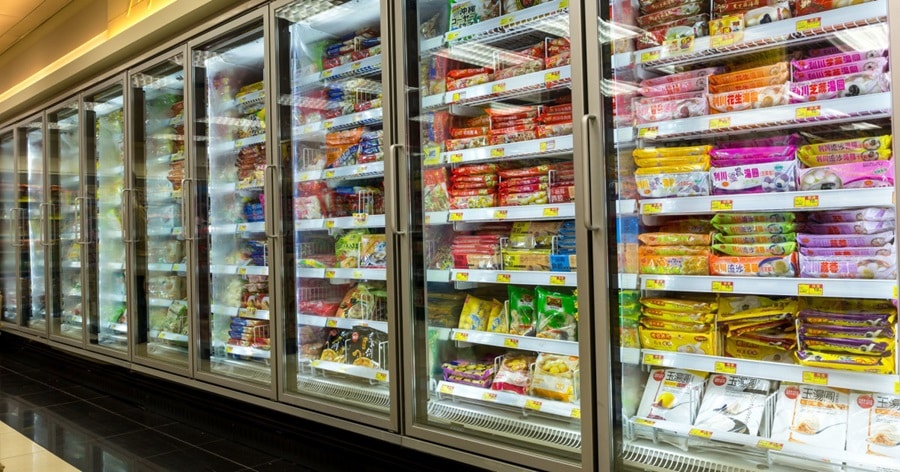Food is a fundamental human need that serves as a source of nourishment and a means of pleasure. However, improper food storage can lead to severe health risks, including foodborne illnesses. This post aims to illuminate the importance of safe food storage, highlight common mistakes, and guide readers toward proper practices that ensure the safety and longevity of their food. By understanding and rectifying unsafe food storage practices, you can contribute to personal health, reduce waste, and, in turn, lessen your environmental impact.
Contents
- 1 The Importance Of Safe Food Storage
- 2 Understanding Food Spoilage
- 3 Common Mistakes In Food Storage
- 4 Exploring Unsafe Refrigerator Practices
- 5 Dangers Of Unsafe Freezer Practices
- 6 The Risk Of Unsafe Dry Storage Practices
- 7 Food Storage Best Practices
- 8 Take Steps To Avoid Unsafe Food Storage Practices!
The Importance Of Safe Food Storage

Every year, millions of people globally are affected by foodborne illnesses, often originating from improperly stored food. Unsafe food storage practices can result in bacterial growth, leading to food spoilage and contamination. The consumption of such food can cause severe health implications such as food poisoning, allergic reactions, and other gastrointestinal issues. Consequently, it’s crucial to understand the importance of safe food storage and adhere to recommended practices.
Besides the health implications, safe food storage has a significant economic impact. According to the U.S. Department of Agriculture, American families throw away approximately 31.9% of their food, corresponding to $1,866 per household per year. Much of this waste can be prevented with correct food storage methods, leading to considerable savings. Moreover, food wastage also has an environmental impact, contributing to the unnecessary use of resources for production and adding to greenhouse gas emissions when wasted food decomposes in landfills.
Understanding Food Spoilage
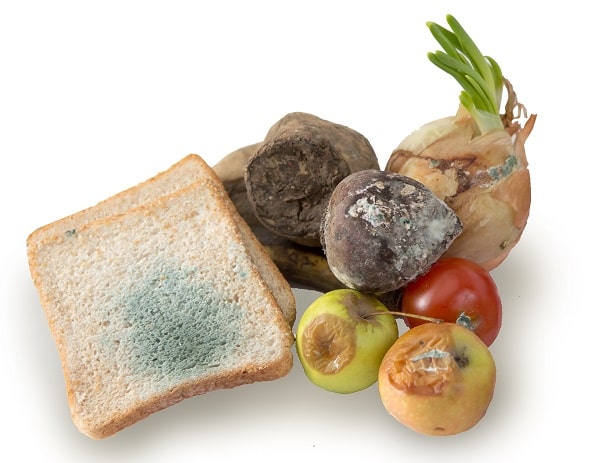
Understanding how and why food spoils is the first step towards preventing it. Food spoilage is primarily caused by the growth of microorganisms such as bacteria, yeast, and molds facilitated by improper storage conditions. For instance, perishable food items like meat, dairy, and cooked meals are a breeding ground for bacteria when left at room temperature for too long.
Temperature control plays a vital role in food preservation. The “Danger Zone,” as defined by the USDA, is the temperature range between 40°F and 140°F, within which bacteria grow most rapidly. If perishable food is left in this zone for more than two hours, it should be discarded as it is likely unsafe for consumption. This is why refrigeration and freezing are essential in extending the shelf life of food items and preventing bacterial growth.
Common Mistakes In Food Storage

Despite the availability of guidelines for safe food storage, many people continue to make mistakes that can jeopardize their health. One common error is improper temperature control. Many households fail to keep their refrigerators and freezers at the recommended temperatures, leading to rapid food spoilage. Additionally, power outages can also cause temperatures to rise, making the food unsafe for consumption.
Cross-contamination is another prevalent issue in food storage. This occurs when harmful bacteria from one food item are transferred to another, often due to the improper arrangement of food in the refrigerator. For example, storing raw meat above ready-to-eat food can result in the dripping of meat juices onto the food below, leading to contamination. Furthermore, the incorrect use of food storage containers, such as using non-food-grade containers or reusing containers without proper cleaning, can also contribute to food spoilage and contamination.
Exploring Unsafe Refrigerator Practices
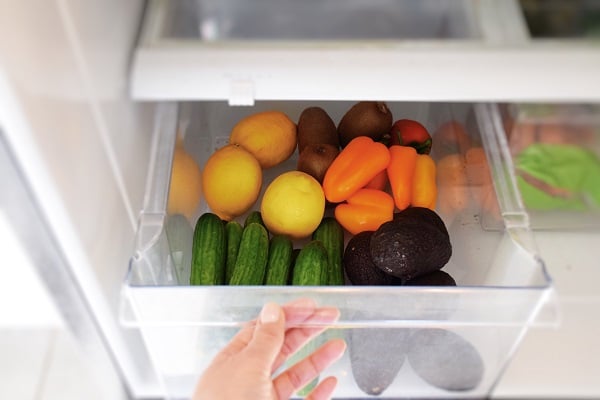
Refrigerators are essential tools for preserving food, but misuse can create an environment conducive to bacterial growth. One common mistake is overstuffing the refrigerator. This restricts air circulation, causing uneven cooling and creating warm spots where bacteria can thrive. In addition, overfilling can lead to forgotten or hidden food items that end up spoiling and contaminating the fridge.
Inappropriate food arrangement in the refrigerator is another unsafe practice. To prevent cross-contamination, you should arrange foods according to their required cooking temperatures, with ready-to-eat foods at the top and raw meats at the bottom. Furthermore, leaving leftovers or opened canned food in the refrigerator without proper storage containers or packaging can lead to the spread of bacteria and potentially cause foodborne illnesses.
Dangers Of Unsafe Freezer Practices
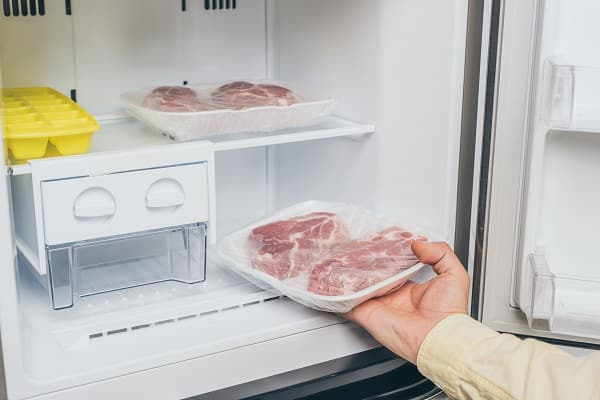
The freezer acts as a pause button for food, significantly slowing bacterial growth. However, unsafe practices can compromise its effectiveness. A common misconception is that food can be frozen indefinitely without losing quality. While freezing does keep food safe, the quality deteriorates over time due to freezer burn and the slow breakdown of the food’s texture and flavor.
Unsafe defrosting methods pose another significant risk. Leaving food to thaw at room temperature provides a perfect environment for bacteria to multiply. If these bacteria are not killed during cooking, they can lead to foodborne illnesses. Similarly, refreezing thawed food can be dangerous as it allows bacteria to multiply each time the food is thawed, increasing the risk of illness.
The Risk Of Unsafe Dry Storage Practices

Dry storage refers to the storage of non-perishable food items at room temperature. Even though these foods have a longer shelf life, unsafe practices can still lead to spoilage. Improperly sealed containers expose food to air and moisture, leading to staleness or mold growth. Similarly, leaving dry foods like grains, flour, and pasta in their original packaging once opened can attract pests.
In addition, environmental factors significantly impact dry storage. Exposure to high temperatures can degrade the quality of the food, while light exposure can cause changes in flavor and nutritional content. Also, storing food near cleaning supplies or chemicals is a risky practice, as fumes from these products can contaminate the food.
Food Storage Best Practices
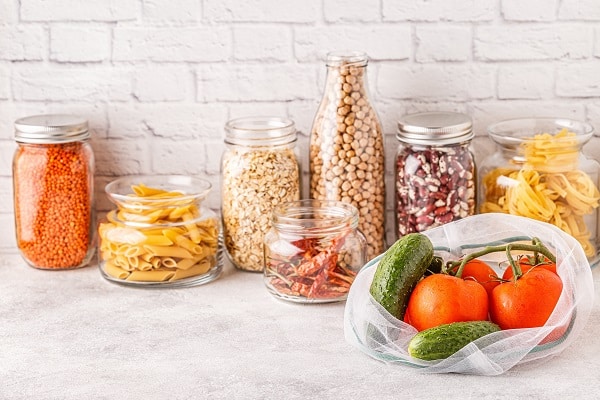
Knowing the correct ways to store food can significantly enhance its shelf life and safety. An essential aspect of this is understanding the correct temperatures for different types of food. For instance, most refrigerated foods should be kept at 40°F or below, while frozen foods should be stored at 0°F or below to prevent bacterial growth.
Adopting a first-in, first-out (FIFO) system can help maintain food quality and prevent waste. This involves using older items before newer ones, ensuring food doesn’t spoil in the back of the refrigerator or pantry. Moreover, using appropriate storage containers is vital. It’s best to use containers made of materials that won’t react with food, like glass or food-grade plastic, and to ensure they are sealed properly to protect from air, moisture, and pests.
Take Steps To Avoid Unsafe Food Storage Practices!
Understanding and implementing safe food storage practices is a crucial aspect of maintaining your health and minimizing food waste. From the dangers of unsafe refrigerators, freezers, and dry storage practices to the significance of temperature control and proper storage containers, this knowledge can help you make informed decisions that protect your well-being and your wallets. It is your responsibility as consumers to educate yourself and others, fostering a culture of safety that ensures you derive the maximum benefit from the food you buy.

